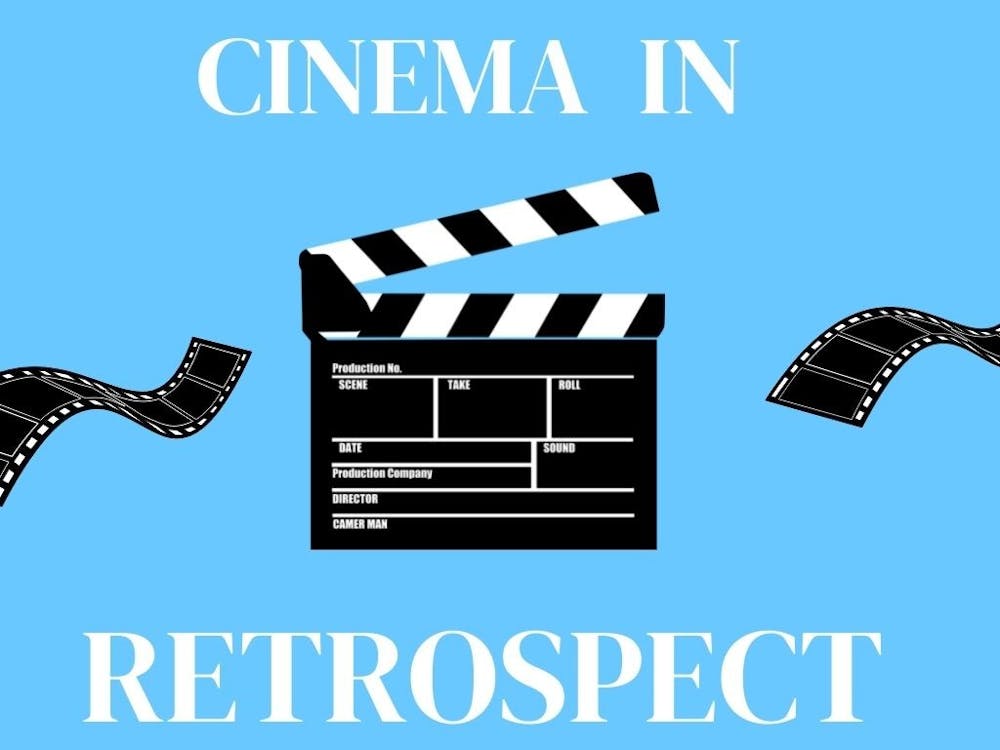Cinema in Retrospect: ‘Naqoyqatsi’
Godfrey Reggio’s 2002 “Naqoyqatsi” uncovers the repercussions of (American) imperialism.
Empire and capital are inseparable from violence. This fact has remained unchanged since their inception. This point is especially true for the capital-backed empire that is America – the country that houses the most millionaires; the country that invented the category of billionaire; the country that spends the most on its military budget; the country that has never stopped going to war. The American Empire was, and continues to be, built by bloodshed – blood stolen overwhelmingly from Black and Indigenous bodies.
“Naqoyqatsi” explores the intersections of power and technology at the turn of the 21st century. The film is a non-narrative experimental documentary composed of newly shot and archival footage, computer generated images, and music scored by the Philip Glass Orchestra. It is made up of three main sections: one on language, one on athletics and one on military might and war.
Given the nature of the film, it is difficult to tease out what it is saying in exact and concise terms – both because its argument is nuanced and because its images progress with such a rapid series of edits. How it is saying things is much easier to address.
The film overwhelmingly displays images in a bleak range of whites, blacks and blues. Digital sequences are often played in back-and-forth loops. Footage of the natural world is shown with its colors inverted.
On an editing level, the film oscillates between slower, visually-prolonged sequences and ones of rapid movement. Frequently, multiple images are overlaid simultaneously to suggest a similarity between them. The film advances at an unfaltering and ominous pace.
One of the first sequences in the film is a series of black and white shots moving around a dilapidated bank. Again and again, the camera orbits the building. And through it, we witness undeniably the vacuous weight of capital – the emptiness that all the violence we will go on to see in the film is leading towards. This is not sustainable.
By beginning this way, the film dispels the idealized myths of empire and capital. It is not whether these systems can work despite their violence, but that they never worked to begin with (while still fueling themselves with violence).
Almost immediately after this, the film transitions to digital images and the subject of the internet. Mazes of binary digits flood the screen and waves of mathematical symbols spill out from every corner. The information is too much, however, and it almost instantly becomes meaningless. We are pulled into the subordinating tide of the digital world. It is this transition that the film is ultimately interested in – the ways in which digital and spectacle serve to obscure the tangible wickedness of our current world.
The other process the film is interested in for the purposes of this observation is the idealization of the human body. It examines the ways fetishization of physical form can be similarly used to cloud the realities of violence behind empire and capital. Extended sequences of not only Olympic athletes but also the endless marching of troops are played in proximity. Only in the interstices do we see the violence – drone strikes, bomb tests and planes full of missiles.
The film paints a dire picture. This is an angry film. It is not difficult to hear the anger and frustration behind the images on screen. Perhaps the message becomes too extreme at times. But the intent remains – that empire and capital are foundationally violent (and vacant).
Enjoy what you're reading?
Signup for our newsletter
Despite the opening paragraphs, it should be noted that the film screens Indigenous people only in passing. While I don’t believe the film is operating out of malice toward Indigenous populations, the fact of its omission is not an idle one. The film offers a critique of a system of power in the same moment that it makes its claim via an appeal to said system.
The film ends with an extended sequence of people and planes, but no parachutes. We watch clusters of people board planes. We watch person after person jump out at immense altitudes. We watch them plummet and plummet – falling as if they were not falling at all; bodies suspended in space. And then the film ends. The title comes back on screen, “Naqoyqatsi.” Below it, a rough translation of the word (borrowed from Hopi orthography) is given – “civilized violence,” and “life as war.”
Contact opinions and columns writer Henry Skalbeck at henry.skalbeck@richmond.edu.
Support independent student media
You can make a tax-deductible donation by clicking the button below, which takes you to our secure PayPal account. The page is set up to receive contributions in whatever amount you designate. We look forward to using the money we raise to further our mission of providing honest and accurate information to students, faculty, staff, alumni and others in the general public.
Donate Now



